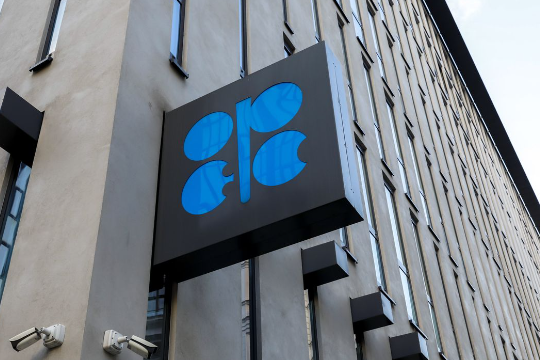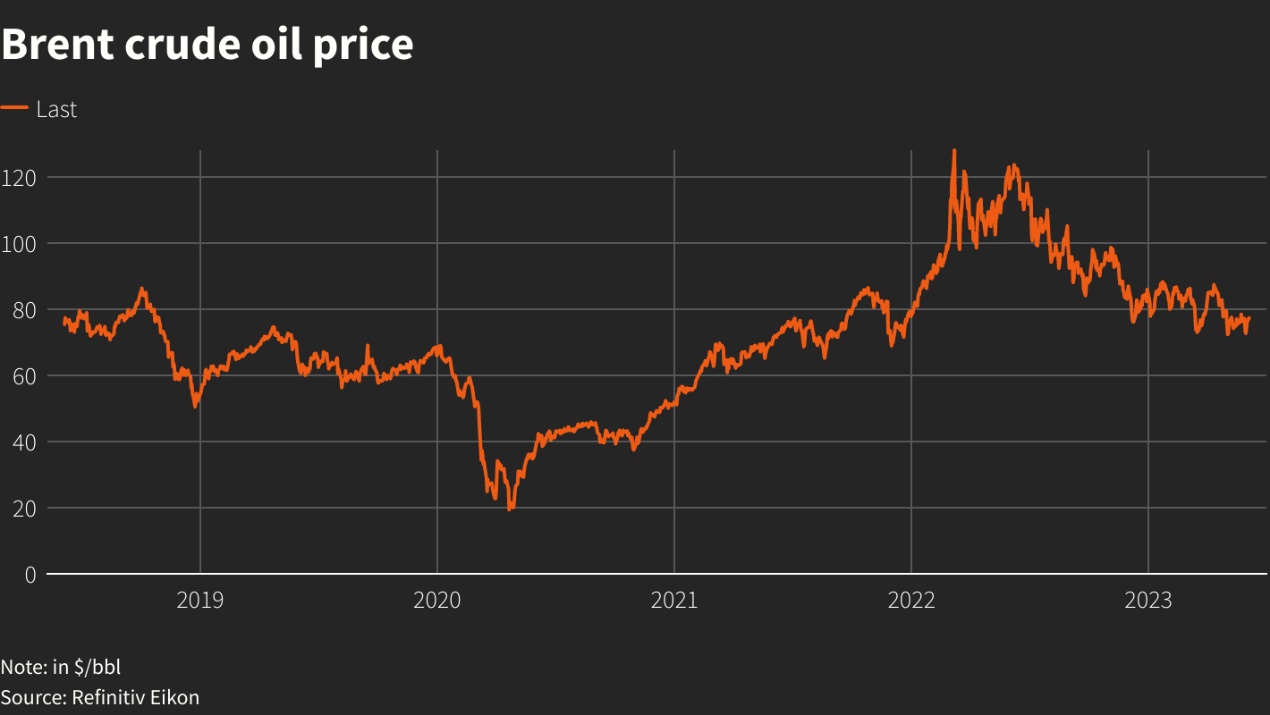章節 4 Jun 6th: Why is OPEC+ Cutting Oil Output?
[The Organization of the Petroleum Exporting Countries and allies including Russia, a group known as OPEC+ which pumps around 40% of the world's crude, agreed on a new oil output deal on Sunday.]
The Organization of the Petroleum Exporting Countries and allies including Russia, a group known as OPEC+ which pumps around 40% of the world's crude, agreed on a new oil output deal on Sunday.
Saudi Arabia, the group's biggest producer, will make a deep cut to its output in July on top of a broader OPEC+ deal to limit supply into 2024 as the group faces flagging oil prices.
A surprise announcement by OPEC+ in April to deepen production cuts helped to raise prices by about $9 a barrel to above $87 per barrel in the days followed.
Yet benchmark crude prices have shed those gains since, with Brent futures on Monday trading at just under $78 a barrel.
On Sunday, in addition to extending the existing OPEC+ cuts of 3.66 million barrels per day (bpd), the group agreed to reduce overall production targets from January 2024 by a further 1.4 million bpd to a combined output of 40.46 million bpd.
The changes, however, included lowered targets for Russia, Nigeria and Angola simply to bring them into line with current production levels.
Here are the main reasons why OPEC+ cut output:
Concerns About Weak Global Demand
Data from China has aroused fears that the economic recovery after coronavirus lockdowns by world's second-largest oil consumer is losing steam.
Russian Deputy Prime Minister Alexander Novak has also pointed to "interference with market dynamics", a Russian expression to describe a Western price cap on Russian oil.
Fears of another banking crisis in recent months have led investors to sell out of riskier assets such as commodities with oil prices falling to near $70 per barrel from a peak of $139 in March 2022.
A global recession could lead to lower oil prices.
Oil prices also recently came under pressure from concerns about U.S. debt ceiling negotiations, though fears of a debt default by the world's biggest oil consumer have abated since a bipartisan deal was sealed last week.
Punishing Speculators
The planned cuts will also punish oil short sellers betting on oil price declines.
In 2020, Saudi Energy Minister Prince Abdulaziz bin Salman warned traders against betting heavily in the oil market, saying that those who gamble on the oil price would be "ouching like hell".
He repeated his warning ahead of Sunday's meeting, telling speculators to "watch out" which many market watchers and investors interpreted as a signal that OPEC+ could consider further output cuts.
US Output Rising
U.S. crude oil production is set to rise by 5.1% to 12.53 million barrels per day (bpd) in 2023 and by 1.3% to 12.69 million bpd in 2024, according to government forecasts.
This compares with around 10 million bpd as recently as 2018.
Meanwhile, Saudi's energy ministry said the country's output, the biggest chunk of OPEC+ production, would drop to 9 million barrels per day (bpd) in July from around 10 million bpd in May, in its biggest reduction in years.
Saudi output is set to rebound to around 10 million bpd from August, unless market conditions prompt the kingdom to extend cuts.
Russia, the world's third-biggest oil producer, is targeting production of around 9.5 million bpd until the end of the year and 9.3 million bpd next year.
Tensions With Washington
Additional cuts from OPEC+ could drive tensions with leading consuming nations that are trying to fight inflation.
Washington called OPEC+'s action in April inadvisable.
The West has repeatedly criticised OPEC for manipulating prices and siding with Russia despite the war in Ukraine.
The United States is considering passing legislation known as NOPEC, which would allow the seizure of OPEC's assets on U.S. territory if market collusion is proven.
OPEC+ has criticised the International Energy Agency, the West's energy watchdog for which the United States is the biggest financial donor, for advocating oil stocks releases last year. The IEA had argued these were necessary to bring down prices given concerns that sanctions would disrupt Russian supply.
The IEA's predictions of price strength never materialised, prompting OPEC+ sources to say it was politically driven and designed to help boost U.S. President Joe Biden's ratings.
The United States, which released most stocks, said it would buy back some oil in 2023, but later ruled that out.
OPEC observers also say the group needs nominal oil prices to be higher because money printing by the West in recent years has lowered the value of the U.S. dollar, the currency in which oil is traded.
Source: The Globe and Mail






